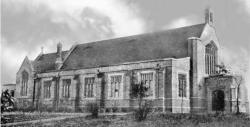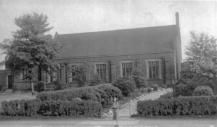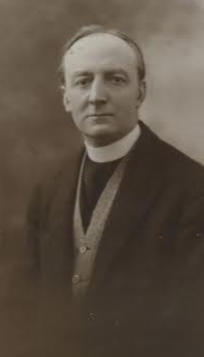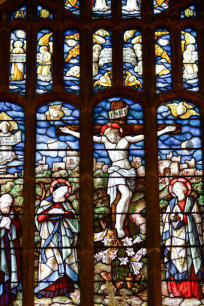History

A brief history of All Saints
At the close of the 19th century there was a need for a church in the western part of St. Peter's Parish. All Saints began in 1891 when a group of enthusiastic people met in the large room of the Mill Residence in Fairclough Street under the guidance of Rev. H. Monk Vicar of St. Peter's Newton and Rev. F.W. Johnstone Curate. In 1898 the group transferred to Gas Street School and in 1905 the Rev. A.E. Bass was responsible for the services. In 1908 Rev. T.B. Walcot succeeded but died after only a few months. At this time Mr. W. Pierpoint became lay reader. In 1910 the Rev. F.F. Komlosy became curate and since services were well attended, more spacious premises were needed so the group transferred to Mr. Holt's assembly room near the Wargrave railway bridge. In 1911 the Rev. B.E. Taylor succeeded as curate and later became the first vicar 1914 - 1925. Mr. Collingwood, later Sir William, who lived at Mere House and was managing director of Vulcan Locomotives, donated £1,000 towards the building of a new church. The conveyance document for the land was signed by Rt. Hon. Thomas Wodehouse, Baron Newton and witnessed by Hilda Legh spinster on 29th December 1914 at Lyme Park Disley Cheshire. The site was valued at £600. Messrs William and Segar Owen of Warrington were selected as architects and the builden were Messrs George Finning and Sons of Newton-le-Willows. Other buildings designed by Messrs William and Segar Owen in Warrington include the School of Art Museum Street, Technical School Palmyra Street, Parr Hall, St. Mary’s 1768-9 Great Sankey; chancel rebuilt by W. Owen 1834, Padgate Church Church 1838; chancel by W. Owen 1882, St. Barnabas Lovely Lane 1879 by W. Owen, incomplete. William and Segar Owen also designed an impressive Gothic organ screen at St. Elphin's Parish Church Warrington. Other work by them is to be found at Port Sunlight, namely the Lady Lever Art Gallery and Christ Church. The first turf was cut on 8th March 1913 by Mr. W. Collingwood and the foundation stone was laid by the Hon. Arthur Stanley M.V.O. M.P. on 10th July 1913. The foundation stone records the visit of King George V and Queen Mary to our area when they made a tour of Lancashire. The stone is situated beneath the east window. Mr. Stanley M.P. had informed the King that the foundation stone was laid on the day of his visit. The King expressed his pleasure that their visit to Newton was so fittingly commemorated. When Sir William and Lady Collingwood were in India they attended All Saints Cathedral in Allahabad and in consequence it was agreed that the new church should have the same dedication. On the 31st October 1914 the church was completed and at the Festival of Dedication the preacher was the Ven. Archdeacon Spooner Rector of Walton. The thank-offerings included an anonymous donation of £1000. Unfortunately the proposed tower at the West end was never built, probably due in part to the lack of funds and evidence of subsidence. We are left with a large porch and elegant plain west window and a single bell turret. A licence was issued on the 31st of October 1914 so that services could be held. The building was actually consecrated by the Lord Bishop of Liverpool Francis James Chavasse on 24th June 1916. The delay was due to the fact that the Ecclesiastical Commissioners required that, "Before a Parish Church is consecrated there shall be an Endowment Fund for the maintenance of the Vicar" etc. Again Sir William Collingwood came forward, and by a generous gift of £700 inaugurated an Endowment Fund for the Vicar's Stipend. The Patronage was then offered to Bishop Chavasse who accepted it with gratitude. The many Clergy present at the consecration included the Rev. James Ryder Vicar of St. Peter's and Rev. B.E. Taylor Curate in charge. The service was impressive and the singing of the all male choir excellent. There was a large congregation and the money for the building was soon raised through sales of work etc. The foundation stone for the Parish Hall was laid by the first Vicar Canon B.E Taylor on 27th May 1961.
East Window: made in October 1929
by Shrigley & Hunt in memory of
Sir W Collingwood




The Rev B. E. Taylor: first vicar
1914-1925.






















